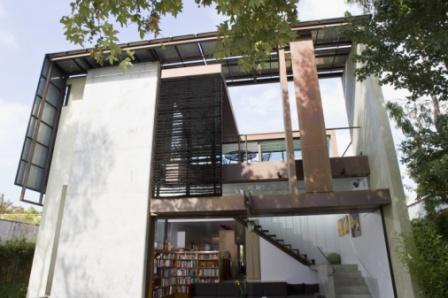

Printable PDF version
Subscribe to our newsletter
A Broader Dimension
Sustainability Base
How Green Is My Building?
Recession - One Year On
Construction
Management Specialists
111 Pine Street, Suite 1315
San Francisco, CA 94111
(415) 981-9430
806 West Pennsylvania Ave.
San Diego, CA 92103
(619) 550-1187
8538 173rd Avenue NE
Redmond, WA 98052
(206) 571-0128
www.TBDconsultants.com
With this edition of our newsletter we re-launch it with a new name. Please pardon us as we deviate from our normal editorial policy to tell you something about ourselves and the reason for the name change.
This is the story of a building that illustrates the ups and downs of the construction market and the growth of the green-building movement.
How Green is My Building?
The LEED rating system is the best-known method for grading green buildings, but does this system really say how green the buildings are when all points are counted as equal? That question likely hinges on what “green” issues you consider as being the most important. Is it saving energy used for heating, cooling and lighting? Is it generating energy by means of PVs or other systems? Is it providing comfortable conditions for the occupants? The LEED system takes all of these, and others, into account, but it is still possible to argue about the importance of different elements in the rating system. One issue that LEED doesn’t directly address is cost, but cost is always an issue for building owners. “Green” HVAC options are often more expensive than traditional systems, but result in savings for fuel costs, and sometimes in maintenance and renewal costs. Consequently, life cycle costing is a method frequently used to substantiate the use of such systems, by bringing initial and maintenance/renewal costs together to create an annual equivalent value, or cumulative present value. These methods can also be used to compare other alternative green options. To compare one building with another, it has been proposed to rate buildings based on their percentage of energy usage – so those that use little energy and produce equivalent amounts would rate higher. These are sometimes referred to as Zero Energy Buildings (ZEBs) or Carbon Neutral designs. These kinds of metrics certainly encourage energy reduction, which has a major effect on the environment, but fail to address other issues, such as comfort of the occupants and issues of water usage etc.

One must also remember that some issues, such as water usage, will vary from one region to another. Also, you have the matter of the usage of systems by building occupants, e.g. operable windows used in conjunction with HVAC systems that can be abused by users, negating HVAC effects (like having the air conditioning on in the car and driving with the windows down).
There is a long way to go to find a universally effective rating system (there is not even an agreed definition for ZEBs yet). In the meantime, systems such as LEED provide workable options that address all, or at least most, of the issues (even if weighting values can be argued). It is unlikely that a classification system can be achieved that will meet the needs of all people and fit all buildings or construction types, but the industry has come a long way in the past couple of decades, and the Green momentum continues to grow.
The recession might be technically over, but it sure doesn't feel like it. Here we take a look at where we are as the effects of the Great Recession drag on.
Design consultant: Katie Levine of Vallance, Inc.